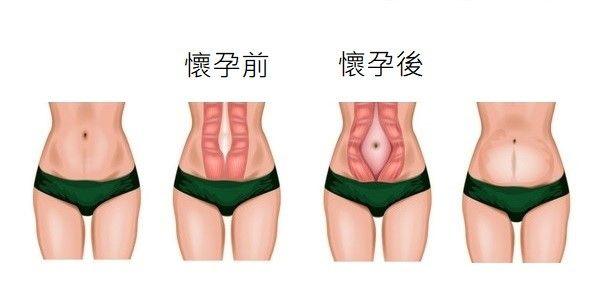What is Diastasis Recti? If you still look pregnant months after giving birth, you may have Diastasis Recti. It’s when the rectus abdominis muscle separates during pregnancy, leaving a gap that allows the underlying fat and organs to protrude.
The rectus abdominis muscles are a pair of flat, vertical muscles that run down the center of your abdomen and are held together by connective tissue called the linea alba. When the linea alba is stretched beyond its limits, it can’t bounce back, and Diastasis Recti occurs.
The rectus abdominis muscles are responsible for helping with back and pelvic movements and supporting your organs. During pregnancy, the pressure on the rectus abdominis muscles from the growing fetus, along with hormonal changes, can cause them to separate. High-risk factors include multiple pregnancies, large babies, and short intervals between pregnancies.
Although the muscles may return to their normal state as hormones return to normal after delivery, about 40% of postpartum women still have Diastasis Recti after six months. Apart from the appearance, Diastasis Recti can cause persistent back pain, urinary leakage, constipation, pelvic floor dysfunction, and other problems, and may require appropriate treatment.
During pregnancy, Diastasis Recti looks like a loaf of bread protruding from the centerline, and the normal width of the linea alba is one to two finger-widths. Diastasis Recti occurs when the width exceeds 2.7 cm or the width of two fingers. Symptoms are obvious and can be felt when coughing or standing but disappear when lying down or relaxing the muscles. Checking for Diastasis Recti is easy. You can lie on the ground with your knees bent and feet flat on the floor, place your hands on your belly, point your fingers to your toes, slowly lift your head, and touch your chin to your chest, which will contract your rectus abdominis muscles. If there is a gap of two finger-widths in the middle of your rectus abdominis muscles, you may have Diastasis Recti, and if you can fit four to five fingers, it’s a severe case.
For treating Diastasis Recti, mild cases can be improved through exercise to tighten the muscles. However, improper exercise can worsen the situation by further weakening and separating the connective tissue. In severe cases, the traditional treatment is surgery to pull both sides of the muscle back to the centerline, but it has a slow recovery and leaves scars. Now, the latest technology, using high-intensity focused electromagnetic waves, can stimulate the muscles to exercise and strengthen the rectus abdominis muscles. Studies have shown that this method can improve Diastasis Recti.

